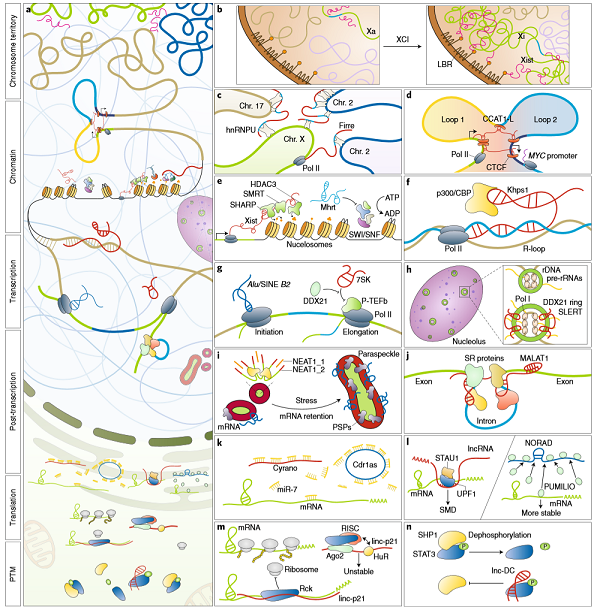Cellular functions of long noncoding RNAs
Source:
Time: 2019-05-05
Research teams led by Dr. CHEN Ling-Ling at Shanghai Institute of Biochemistry and Cell Biology, Chinese Academy of Sciences were invited to publish a review paper, entitled “Cellular functions of long noncoding RNAs” (
DOI: 10.1038/s41556-019-0311-8), in Nature Cell Biology to survey the most recent progress on cellular functions of lncRNAs and discuss techniques used in lncRNAs studies.
Approximately 80% of the mammalian genome is transcribed in a cell-specific manner, particularly noncoding regions. Only a small portion of the mammalian genome is transcribed into protein-coding mRNAs, and the vast majority produces numerous long noncoding RNAs (lncRNAs). lncRNAs comprise various RNA species longer than 200 nucleotides (nt) that are not translated into proteins. These include mRNA-like intergenic transcripts (lincRNAs), antisense transcripts overlapping with other genes and primary RNA polymerase II (Pol II) transcript-derived unconventional lncRNAs whose stabilization can be achieved by RNase P cleavage to generate a mature 3′ end of a U-A·U triple-helix structure, capping by snoRNA-protein complexes (snoRNP), or forming covalently closed circular structures to prevent exonucleolytic degradation. This review discusses the various functions of lncRNAs using specific examples how lncRNAs regulate chromatin organization and transcription in the nucleus, and modulate mRNA stability, translation and post-translational modification (PTM) in the cytoplasm. Furthermore, this invited review summarizes the processing and generation of the various lncRNAs, expounds the biological function and related mechanism of lncRNA in mammalian cells.
This paper systematically and comprehensively summarizes the relevant research progress of various lncRNA so far as well as technical means summarization and prospect for the future lncRNAs studies. This study was financially supported by the National Natural Science Foundation of China, Chinese Academy of Sciences, the Ministry of Science and Technology of China, and the Howard Hughes Medical Institute.

Cellular functions of lncRNAs.
Contact: linglingchen@sibcb.ac.cn

 Appendix:
Appendix: